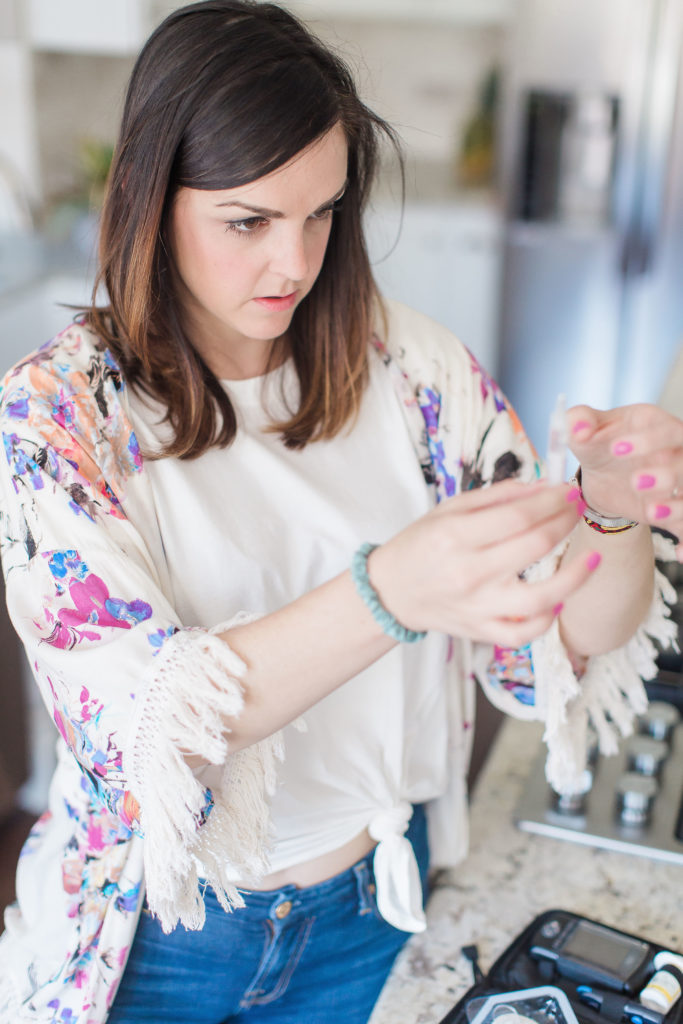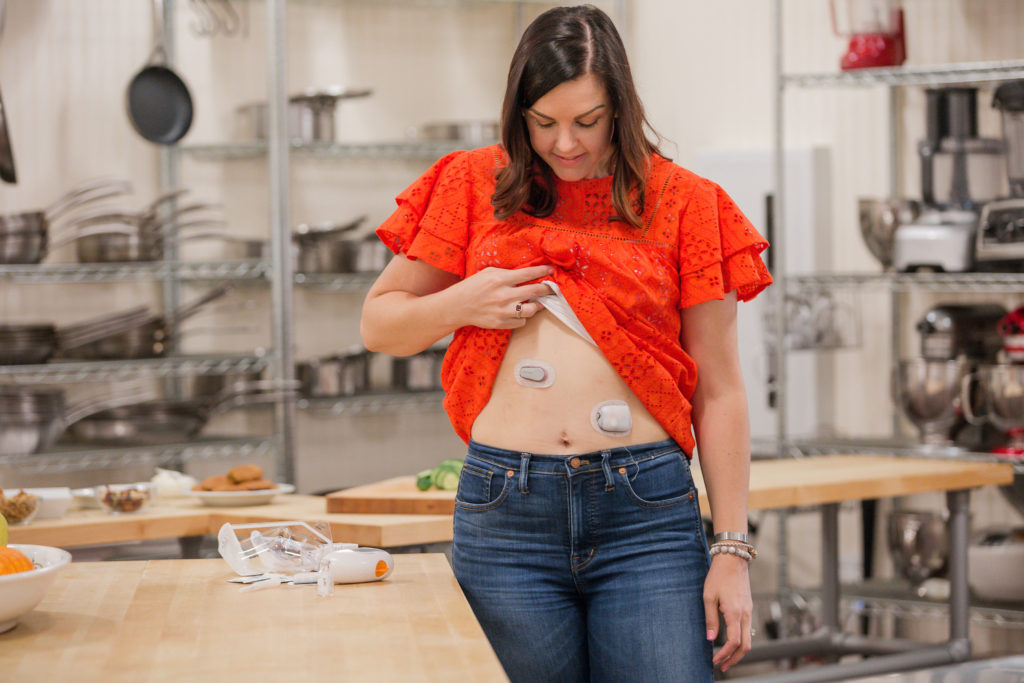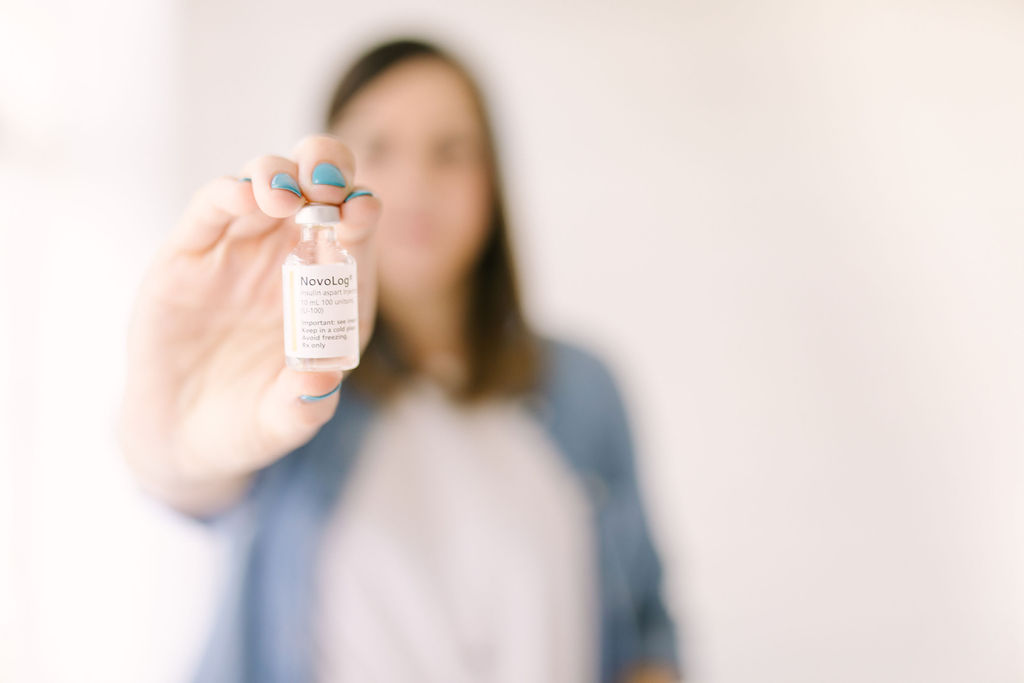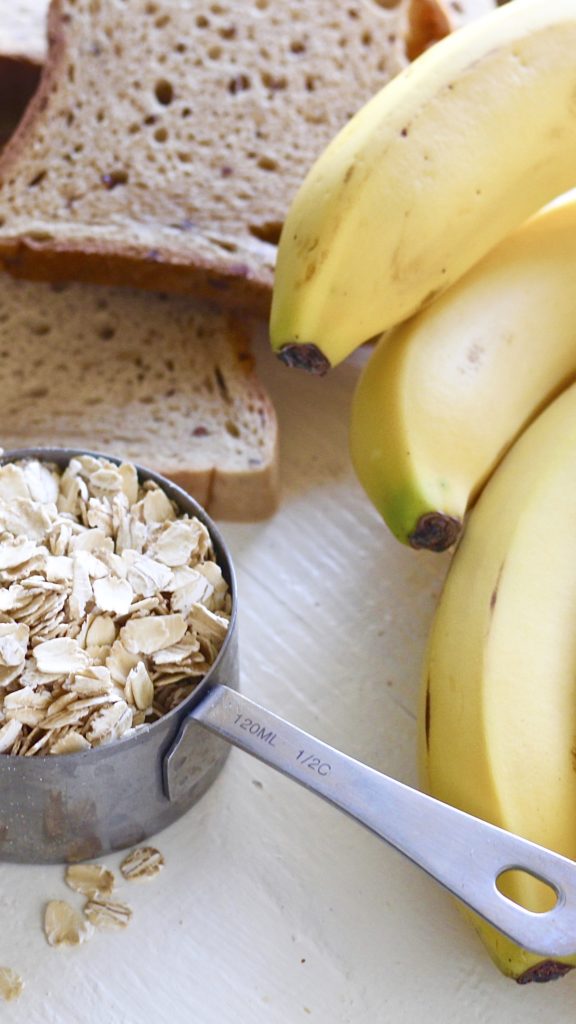
There are so many diabetes myths floating around on the internet that it’s no surprise people are often confused on things related to diabetes.
We live in a time of information overload, but unfortunately there’s just as much mis-information out there about diabetes as there is helpful information. Keep reading for some of the top diabetes myths I have encountered and why they’re simply just not true.
BMI and diabetes relationship myth: Diabetes only affects people with a high BMI

One of the most common diabetes myths is that it only affects people with a high BMI. Although a higher BMI can increase the risk for developing type 2 diabetes not everyone who is diagnosed with type 2 diabetes has a high BMI. Some people with type 2 diabetes are in a normal BMI range but have other risk factors of type 2 diabetes: fat distribution, family history, and lifestyle behaviors.
Type 1 diabetes is an autoimmune disease that influences the ability of the pancreas to produce the hormone insulin. When the body starts to attack the beta cells of the pancreas, they can no longer produce insulin in order to lower blood glucose. This type of diabetes is not influenced by a high BMI, but by genetic factors and family history.
Diabetes and genetics myth: It is impossible to have diabetes if no one in the family is.
As mentioned above, family history can play a role in developing diabetes, but this does not mean it is impossible if no one else in the family has been diagnosed.
Let’s start with the type 1 diabetes. Without getting too nitty-gritty into the genetic markers, think about the Punnett squares you did in elementary school to find out the likelihood of your parents having a baby with green eyes. Even though both parents have brown eyes, their genetic makeup still makes it possible for their baby to have green eyes. If both of your parents carry a gene that makes you more susceptible to have type 1 diabetes there is a higher chance you would have type 1 diabetes, even if both parents don’t have type 1 diabetes.
The same can be said for type 2 diabetes as a genetic risk factor, but there are so many risk factors that play into the possibility of developing type 2 diabetes. Even if both parents have type 2 diabetes, lifestyle choices and nutrition choices can counteract that risk.
Type 1 diabetes age of onset: It only happens to children and adult onset type 1 diabetes
This is a common diabetes myth. While, yes, it is more common to develop type 1 diabetes in childhood, it can still occur anytime throughout the lifespan. Genetics is the main contributor to the development of type 1 diabetes, but it is not the only risk factor. Some other factors are viral infections, race/ethnicity, geography, early diet, and other autoimmune conditions.
*To clarify, not all viral infections are going to lead to the development of type 1 diabetes, in fact, there is only a handful that MAY increase risks and it is hard to even prove this scientifically.
Anyone who has diabetes has to take insulin

Not everyone that is diagnosed with diabetes has to take insulin. Catching type 2 diabetes earlier can help your healthcare team intervene before the need for insulin. Taking an oral medication and lifestyle changes can help reduce the possible need for insulin.
People with type 1 diabetes, on the other hand, are insulin-dependent. The autoimmune disorder has destroyed the cells of the pancreas that creates insulin, making an outside source of insulin necessary to stay alive.
It isn’t safe to exercise

Exercise and any form of physical activity that you enjoy is highly encouraged for most people with diabetes!
As you exercise, your cells become more sensitive to insulin which will allow glucose to enter the cell easier, and thus lowering glucose levels in the blood (aka, lowering your blood sugar). Even though this is encouraged and part of a productive health care plan, it does take careful consideration to prevent hypoglycemia.
Blood glucose levels can drop too low because of the increased ability of glucose to enter the cells. To prevent blood sugars from reaching this dangerously low level, speak with your healthcare team about adjustments of insulin dosing or an additional glucose source before or during exercise.
People with diabetes are at a higher risk of getting sick
Having diabetes does not make a person more prone to getting sick. This is a diabetes myth.
But, what IS true is that when a person with diabetes has a cold, flu, or other illness, their blood sugars can become increasingly difficult to manage. For more information on managing blood sugars during sickness, make sure to check out my blog post on stress and diabetes.
People with diabetes can’t eat carbs

This diabetes myth is so far from the truth, and is incredibly dangerous! Carbs are necessary for so many different functions in the body. I talk all the time about using fat, fiber, and protein to balance blood sugars and slow down the digestion of carbohydrate. I highly recommend checking out my article on choosing the “right” foods for diabetes if you haven’t already read it. Nothing is completely off-limits, just remember to make a plan and think about which foods you’re pairing together.
People with diabetes can only eat foods with a claim of being diabetes-safe on the label
People with diabetes can eat all kinds of foods, it just takes planning and careful consideration of glucose levels. People might find this marketing an easy way to ensure they are eating appropriately for their disease, but these products are sometimes not the best choice. Many packaged products are overly processed and have an abundance of added ingredients, and not to mention they often taste like cardboard anyways… If you are needing a fast snack without the option of fresh foods be sure to check food labels and ingredient lists before trusting the claims on the front of a package.
Cinnamon lowers blood sugar

This is the most common supplement diabetes myth I hear… There are many claims that cinnamon will lower blood sugars, but this is not scientifically proven. There are articles claiming it reduces not only your glucose levels but cholesterol and triglycerides too. Research is still needed to find a definitive claim, but currently, it is not a proven way to lower glucose levels. Given that statement, if you wanted to try this method and you enjoy the taste of cinnamon it wouldn’t hurt to sprinkle it on some oatmeal in the morning or put it in a heart-healthy dinner.
And, if you would like an easy to understand go-to resource that is completely myth free, make sure to check out my cookbook The Easy Diabetes Cookbook!






